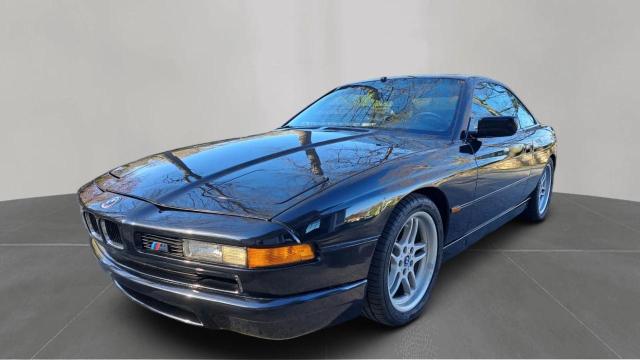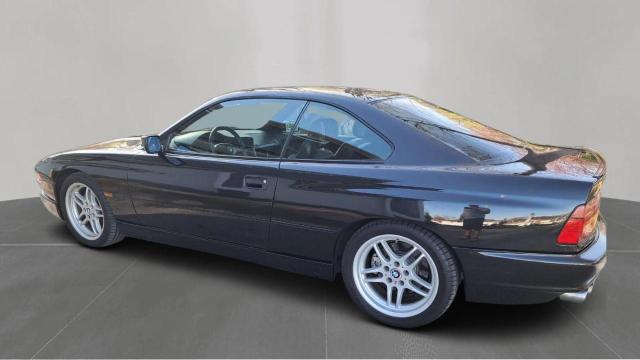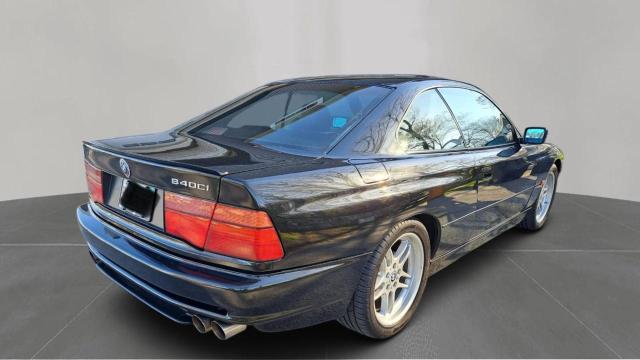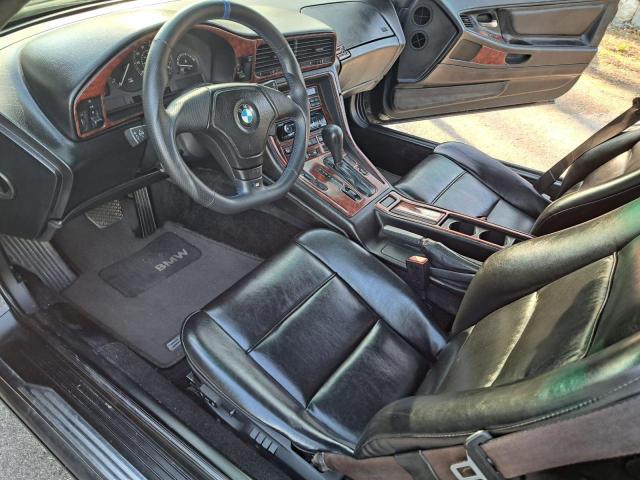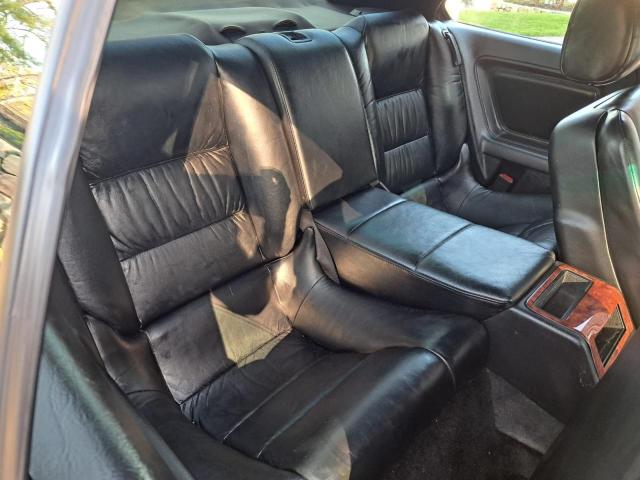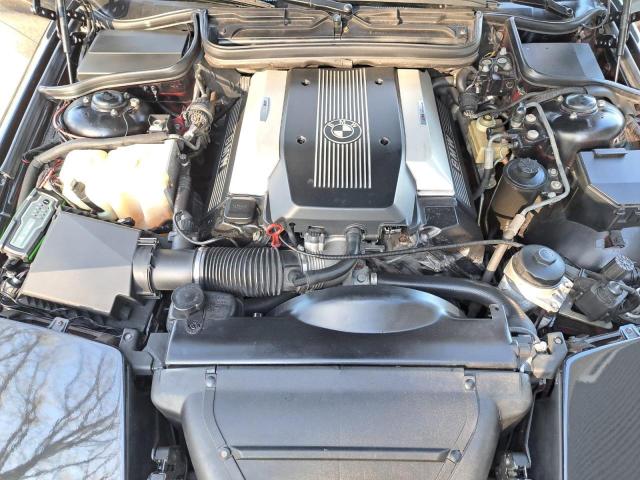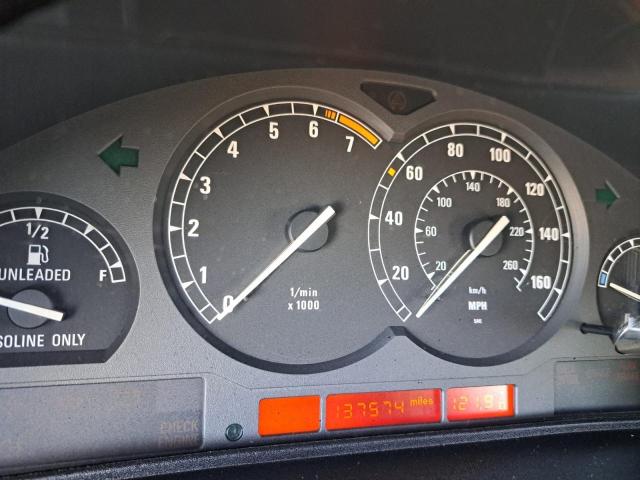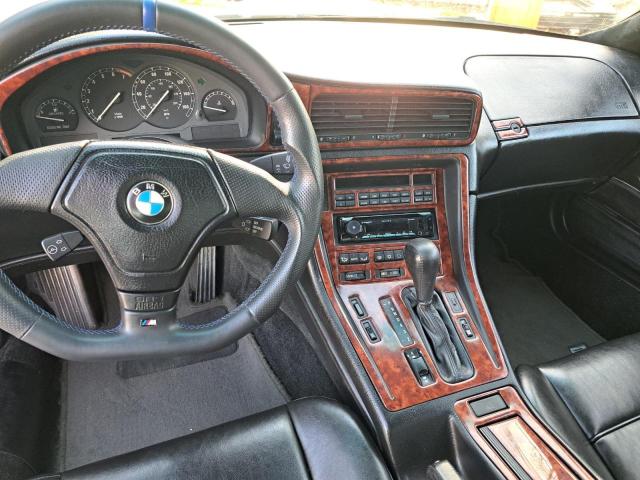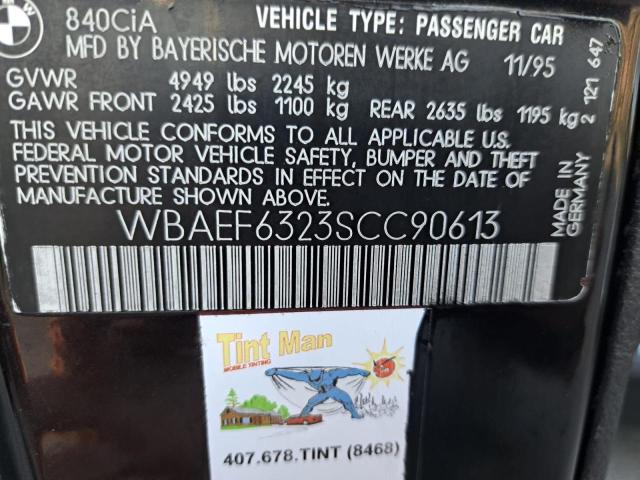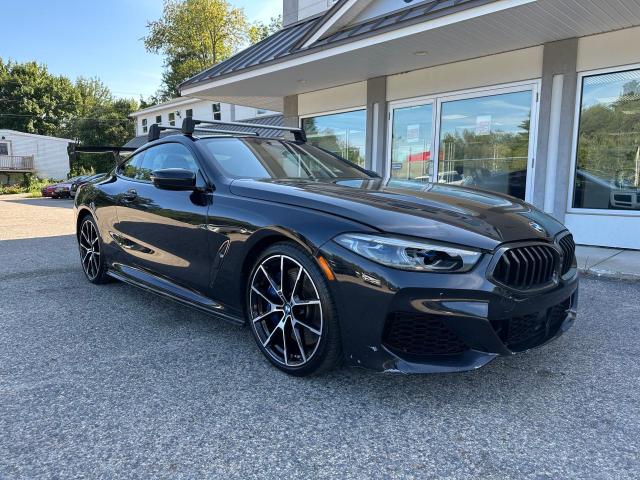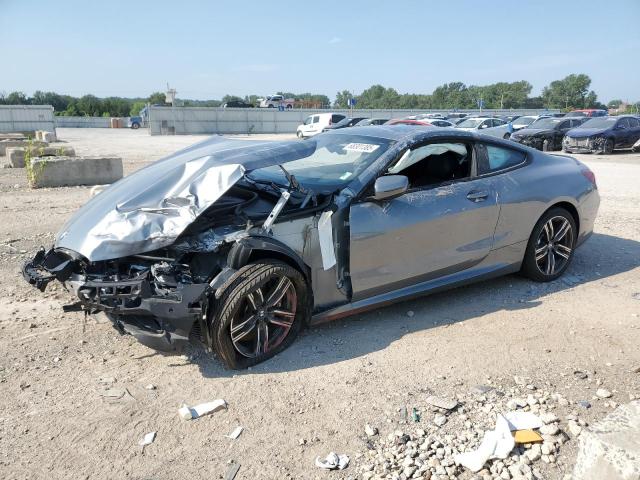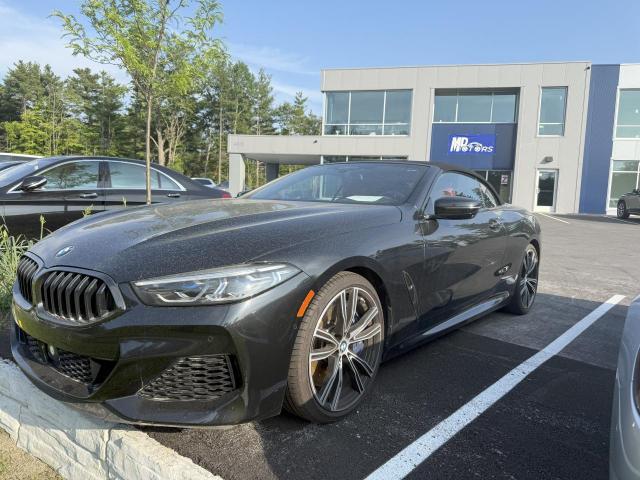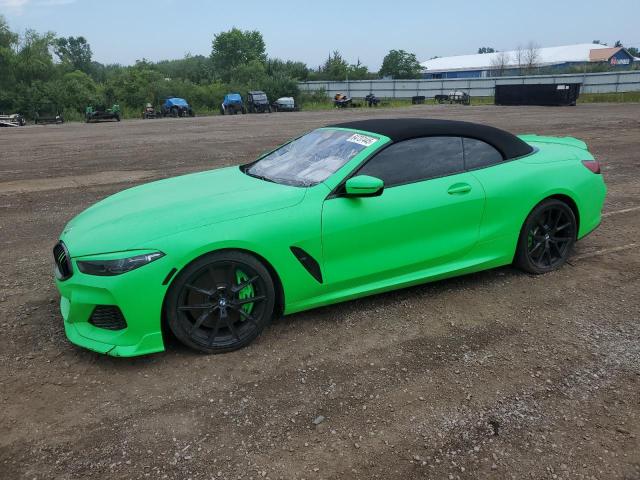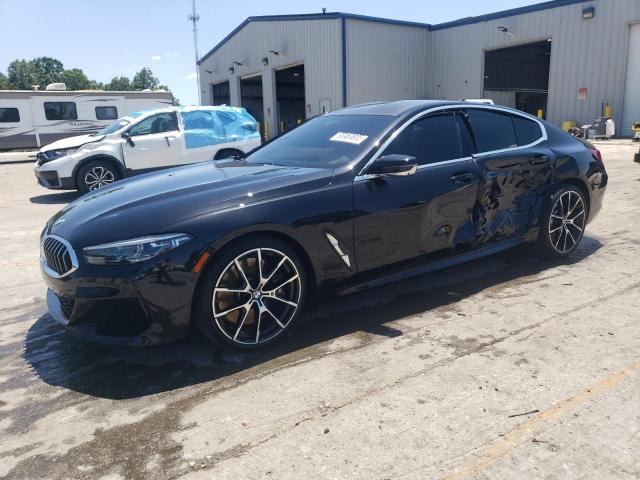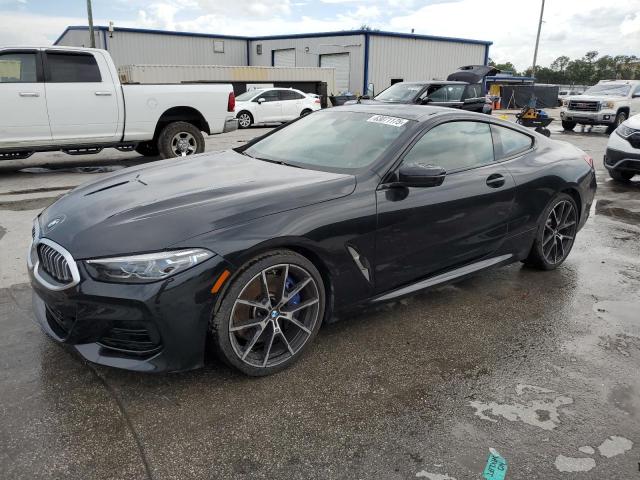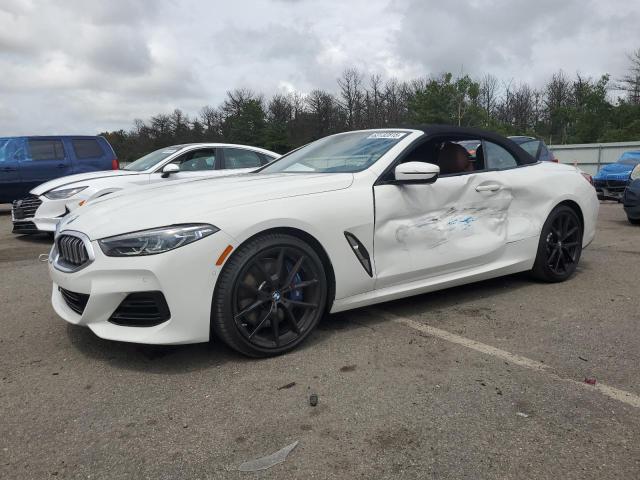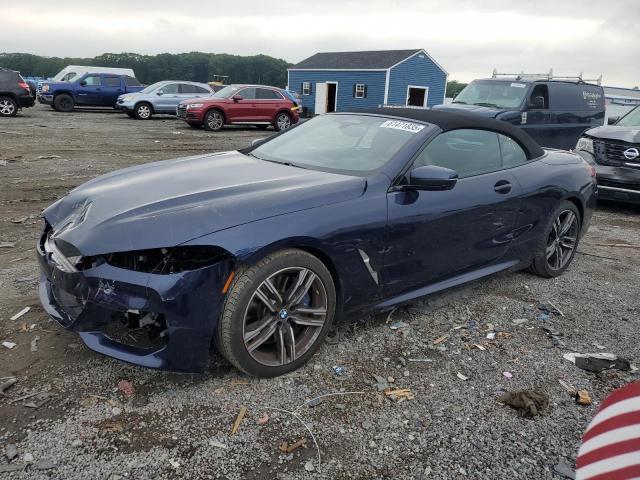1995 BMW 840CI | WBAEF6323SCC90613
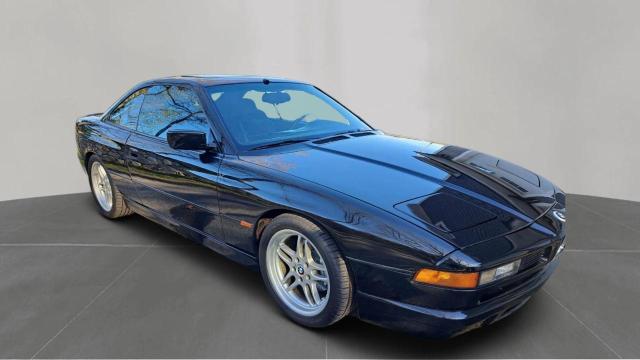 ❯
❯Lot details
- Sale Date2025-05-02
- Lot Number55196145
- Sale documentMA - CERTIFICATE OF TITLE (P)
- LocationMA - NORTH BOSTON
- Odometer137,574 miles (221,403 km)
- Primary DamageNORMAL WEAR
Vehicle specifications
4
~$120,000
Engine: 5.6L naturally aspirated V12
Torque: 550 Nm
0–100 km/h: ~5.9 s
The 850CSi was the pinnacle of the E31 8 Series lineup, delivering serious grand touring performance through a 5.6-liter V12 engine tuned by BMW Motorsport. Producing 380 horsepower and 550 Nm of torque, it was capable of accelerating from 0 to 100 km/h in 5.9 seconds — an impressive figure for the early 1990s, especially considering the car’s near-1800 kg curb weight and luxury intentions. Its power delivery was smooth, torquey, and muscular across the rev range, matched exclusively to a 6-speed manual transmission for an involving drive.
Underneath its sleek shell, the E31 was one of the most technologically ambitious cars of its era. It was the first production BMW with a multi-link rear suspension, electronic drive-by-wire throttle, and an integrated CAN bus system. The 850CSi added stiffer suspension, quicker steering, and active rear-wheel steering (AHK), giving the big GT sharper reflexes than its size suggested. Though never a track-focused machine, it handled long sweepers and autobahn sprints with aplomb, blending comfort with precision in a way few contemporaries could.
BMW designed the 8 Series not as a successor to the 6 Series, but as a flagship technological showcase and grand tourer to rival Mercedes’ SL and even Ferrari’s 456 GT. It wasn’t about razor-sharp handling or light weight — it was about combining effortless high-speed cruising with driver engagement and style. In this role, the E31 succeeded brilliantly, setting the tone for what modern GT coupes could be.
Final Bid BMW 8 Series (1995)
$15,200
$15,200
$15,200
Body Styles
The BMW E31 8 Series was sold exclusively as a two-door grand touring coupé with a long, low, and wide stance. Its wedge-like silhouette featured a steeply raked windshield, a tapering rear roofline, and frameless doors, all contributing to its sleek aerodynamic profile. Measuring around 4.78 meters in length and just 1.34 meters in height, the car sat low and planted, with a wide track that enhanced visual aggression. Pop-up headlights gave the front end a shark-like presence when retracted, while the integrated rear spoiler and flush-fitting glass emphasized its clean, futuristic design. With no convertible or four-door body styles available, the 8 Series remained a dedicated 2+2 GT coupé throughout its production.
Model Name Meaning (Manufacturer)
The “8 Series” name was introduced to signal a new class of BMW vehicles — above the 7 Series in price and luxury, and unrelated to the existing 6 Series of the time. BMW intended it to represent the brand’s technological flagship: a grand tourer for high-speed continent-crossing rather than a traditional sports coupe. The “850” designation referred to the engine displacement and cylinder count, with the “50” indicating a 5.0-liter V12 and later variants reflecting size or position within the range.
Body & Interior Colors and Rims
The 8 Series E31 was offered in a variety of refined and sometimes daring paint colors, including Calypso Red, Oxford Green, Mauritius Blue, Arctic Silver, and Daytona Violet. More understated shades such as Alpine White, Jet Black, and Cosmos Black were popular among conservative buyers, while special-order colors through BMW Individual allowed for highly customized finishes including metallic bronzes and deep pearlescents. The paint quality was exceptional for its time, with multi-layer clearcoat finishes emphasizing the car’s sculpted surfaces.
Interiors reflected the car’s luxury GT positioning, with full leather upholstery in shades such as Lotus White, Silvergray, Dark Beige, and Classic Red. High-gloss wood trim in Walnut or Birch, as well as matte Black or Anthracite panels, adorned the dashboard and center console. Optional sports seats, integrated seatbelt arms, and a driver-oriented cockpit created a cocooning environment that blended comfort with purpose. The dash featured large analog gauges and an early version of BMW’s onboard computer interface.
Factory wheels ranged from 15 to 18 inches depending on the trim, with the 850CSi receiving exclusive forged M Parallel 17-inch alloys with a staggered width. Other wheel designs included turbine-style multi-spokes and cross-spoke patterns, many finished in polished silver or subtle gunmetal tones. These wheels emphasized stance and complemented the car’s flowing proportions, while upgraded suspension setups allowed wider fitments for more grip.
Top Expensive Options
- BMW M Parallel Forged Wheels: $2,200
- Full Nappa Leather Interior Package: $3,500
- Automatic Stability Control + Traction (ASC+T): $1,100
- Heated Front Sports Seats: $900
- CD Changer with BMW Hi-Fi System: $1,200
- Integrated Car Phone with Digital Display: $2,300
- Electrically Adjustable Steering Column: $750
- BMW Individual Paint Finish: $2,000
- Sunroof with Tilt and Slide: $1,100
- Rear Axle Active Steering (AHK): $2,800
vs Competitors
The BMW 8 Series E31 stood in a unique position during the 1990s — more luxurious than a Porsche 928, more technologically advanced than a Mercedes SL, and significantly more exclusive than the Jaguar XJS. While not as outright sporting as the Ferrari 456 GT, it offered similar presence and V12 performance at a lower cost of ownership. Compared to the Lexus SC400, the BMW was more driver-focused, with sharper dynamics and far more advanced chassis and electronic systems. Though its weight and price limited mass-market appeal, the E31 was a halo car that showcased what BMW could achieve when technology, design, and performance were given full priority — years before the age of digital dashboards and electric assists became mainstream.
Fun Fact
Despite its high performance and luxurious positioning, the BMW 8 Series E31 was the first car in the world to feature a production drive-by-wire throttle system and a CAN bus multiplex wiring system — innovations that laid the groundwork for modern electronic vehicle architectures. The car also featured pop-up headlights, making it the only BMW in history with this design element, which has since become a beloved icon of 1990s automotive styling.



